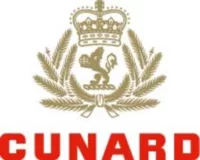
Cunard Line
The age of elegance lives on aboard Cunard's impressive fleet, with white-gloved afternoon teas, grand staircases, exuberant cabins and formal galas in elegant restaurants.
Now that Cunard has observed the centenary of its pioneering world cruise, the famous mantra of dignified excellence has intensified to create not just one of the greatest cruise experiences, but the finest travel money can buy.
2061
Passengers
913
Crew
2007
Launched
2017
Last refit
90049t
Tonnage
294m
Length
32.3m
Width
18kts
Speed
12
Decks
USD
Currency
Cruise Itinerary
Day 1
Trieste, Italy
Day 2
At Sea
Relax and make the most of the myriad of facilities available on board the ship, from fantastic entertainment to delicious and diverse dining options.
Day 3
Dubrovnik, Croatia
Arrival Time: Early Morning; Depart Time: Evening
Day 4
Kotor, Montenegro
Arrival Time: Early Morning; Depart Time: Evening
Day 5
Corfu, Greece
Arrival Time: Early Morning; Depart Time: Evening
Day 6
Cephalonia, Greece
Arrival Time: Early Morning; Depart Time: Evening
Day 7
At Sea
Relax and make the most of the myriad of facilities available on board the ship, from fantastic entertainment to delicious and diverse dining options.
Day 8
Civitavecchia, Italy

Day 1
Trieste, Italy

Day 2
At Sea

Day 3
Dubrovnik, Croatia

Day 4
Kotor, Montenegro

Day 5
Corfu, Greece

Day 6
Cephalonia, Greece

Day 7
At Sea

Day 8
Civitavecchia, Italy
Ship Details


Cunard Line
Queen Victoria
Queen Victoria will delight you with her special appeal, where elegance and unique features combine seamlessly with outstanding hospitality. You’ll discover an extraordinary way to see the world.
Cabins
All Prices















